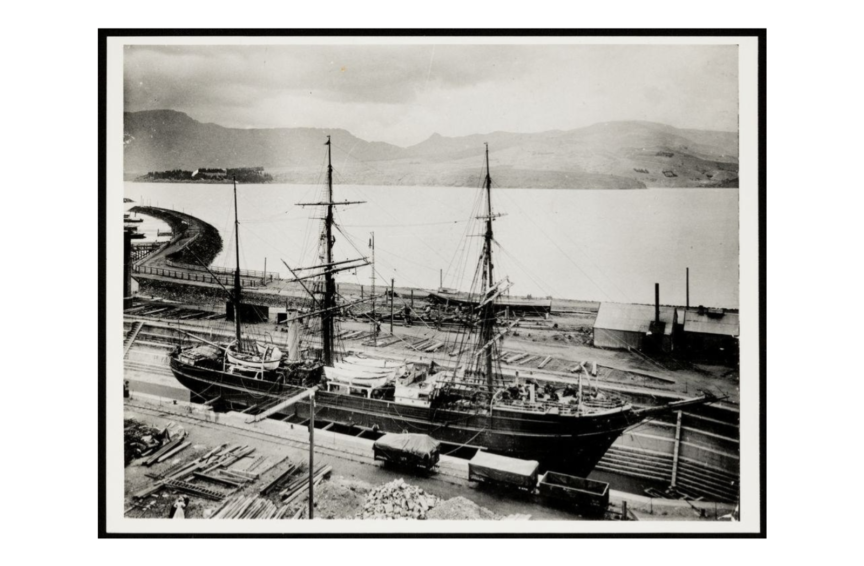PO Box 95
Lyttelton 8841
Te Ūaka recognises Te Hapū o Ngāti Wheke as Mana Whenua and Mana Moana for Te Whakaraupō / Lyttelton Harbour.
Ōhinehou Lyttelton – Dog Town
It seems that Lyttelton has always been a town that welcomes our four-legged friends. The first image from the Museum’s collection features a brawny dog on Ōtamahua Quail Island, prior to Robert Falcon Scott’s ill-fated 1910-13 Terra Nova Expedition that was based in Christchurch. Scott had chosen the city for its magnetic observatory and excellent Lyttelton port facilities, and also possibly the family connection as his cousin R.J. Scott was then Professor of Engineering at the University of Canterbury. Explorers like Scott and Shackleton also used the Ōtamahua Quail Island quarantine facility as a quarantine and training location for the dogs and ponies they took to Antarctica.
For the Terra Nova Expedition Scott had asked the Irish born adventurer Cecil Meares to lead the dog sledge teams, along with the experienced Russian dog handlers Anton Omelchenko and Dmitry Girev. In November 1910 at Lyttelton they loaded 34 dogs, along with 19 Siberian ponies and three motorised sledges aboard the Terra Nova before sailing for Port Chalmers to take on coal and then on to Antarctica. The dogs were mostly Siberian huskies and were essential on those early Antarctic expeditions for sledge pulling.
On arrival in McMurdo Sound they set up the first base at Cape Evans on Ross Island, erecting a prefabricated structure that is now known as Scott’s Hut. This base served as an important shelter for the Terra Nova teams and their animals, as well as for members of Shackleton’s 1915-17 Ross Sea party who were marooned there for 18 months. Dug out from the ice in 1956 by a US expedition, the Hut remains in remarkably well preserved condition to this day.
While the ponies on Scott’s expedition did not fare well in the fierce polar conditions, and the motorised sledges even less so, it was the dog teams that came through and performed beyond Scott’s expectations. Some of the men built very close relationships with individual dogs – Scott’s favourite was named “Osman”, who famously saved a sledge and team of ten harnessed dogs from sliding into a crevasse.
While Scott and four more of his team failed to survive the return journey from the South Pole, Osman returned to Lyttelton with the Terra Nova in 1913 and lived happily with Dmitry Girev in Christchurch for the next three years. After Girev returned to Russia in 1916, Osman was sent to the Wellington Zoo with newspapers of the day heralding the arrival of “Osman the Great”. There, in the company of a pack of Shackleton’s dogs from the 1914 expedition, Osman lived out his adventurous life.
The wonderful bronze statue by local sculptor Mark Whyte, near the site of the proposed new Museum, pays tribute to those canine workers and companions of the early explorers. He gazes towards both Ōtamahua Quail Island and due south to Antarctica itself. We note how shiny his ears are becoming due to constant patting by passersby. History is alive and well right on our main street!

